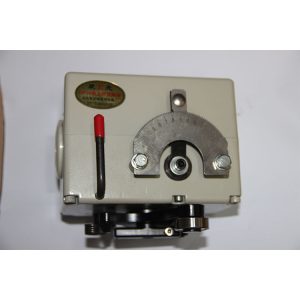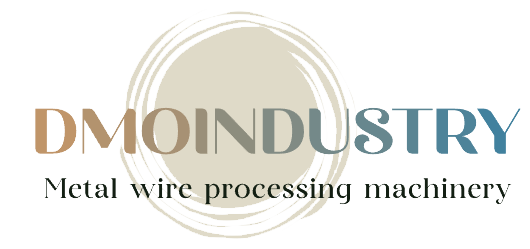Table of Contents
Avantages de l’utilisation d’entraînements linéaires dans l’automatisation industrielle
Comment les entraînements linéaires améliorent la précision et l’efficacité des processus de fabrication

L’avenir des entraînements linéaires dans les industries robotique et automobile

Les entraînements linéaires sont un composant crucial dans les industries de la robotique et de l’automobile, fournissant le mouvement et la précision nécessaires pour diverses applications. À mesure que la technologie progresse, la demande d’entraînements linéaires plus efficaces et plus fiables augmente. Dans cet article, nous explorerons l’avenir des entraînements linéaires dans ces secteurs et comment ils façonnent la façon dont nous concevons et construisons des machines.
L’une des tendances clés dans le développement des entraînements linéaires est l’intégration de technologies intelligentes. Avec l’avènement de l’Industrie 4.0, les entraînements linéaires deviennent plus intelligents et interconnectés, permettant une surveillance et un contrôle en temps réel. Cela améliore non seulement les performances et l’efficacité des machines, mais permet également une maintenance prédictive, réduisant ainsi les temps d’arrêt et les coûts.
Un autre aspect important de l’avenir des entraînements linéaires est leur adaptabilité et leur flexibilité. À mesure que les industries évoluent et que de nouvelles applications émergent, le besoin d’entraînements linéaires faciles à personnaliser et à reconfigurer devient de plus en plus important. Les fabricants développent désormais des entraînements linéaires modulaires qui peuvent être facilement intégrés dans différents systèmes, permettant des mises à niveau rapides et rentables.
De plus, la demande d’entraînements linéaires d’une précision et d’une exactitude supérieures stimule l’innovation dans l’industrie. Avec la complexité croissante des tâches exécutées par les robots et les véhicules, le besoin d’entraînements linéaires capables de fournir un mouvement précis et reproductible est primordial. Les fabricants développent désormais des entraînements linéaires dotés d’algorithmes de contrôle et de systèmes de rétroaction avancés pour garantir le plus haut niveau de précision.
Outre la précision, l’avenir des entraînements linéaires réside également dans leur efficacité énergétique. Alors que la durabilité devient une priorité absolue pour les industries du monde entier, il existe une demande croissante d’entraînements linéaires capables de fonctionner avec une consommation d’énergie minimale. Les fabricants se concentrent désormais sur le développement d’entraînements linéaires dotés de composants à faible friction et de moteurs économes en énergie afin de réduire la consommation d’énergie et l’impact environnemental.
De plus, l’intégration des entraînements linéaires avec d’autres technologies telles que l’intelligence artificielle et l’apprentissage automatique ouvre de nouvelles possibilités pour L’industrie. En combinant des entraînements linéaires avec des algorithmes d’IA, les machines peuvent désormais apprendre et s’adapter aux conditions changeantes, améliorant ainsi leurs performances et leur efficacité au fil du temps. Cela améliore non seulement les capacités des robots et des véhicules, mais ouvre également la voie à de nouvelles applications et innovations.
Dans l’ensemble, l’avenir des entraînements linéaires dans les industries robotique et automobile est prometteur, avec des progrès en matière de technologie intelligente, d’adaptabilité, de précision, d’énergie. l’efficacité et l’intégration avec d’autres technologies qui stimulent l’innovation dans l’industrie. À mesure que les industries continuent d’évoluer et d’exiger davantage de leurs machines, le rôle des entraînements linéaires ne fera que devenir plus critique dans la façon dont nous concevons et construisons des machines. Grâce à une recherche et un développement continus, nous pouvons nous attendre à voir des avancées encore plus révolutionnaires dans la technologie des entraînements linéaires dans les années à venir.
Linear drives are a crucial component in many manufacturing processes, providing the precision and efficiency needed to produce high-quality products. These drives are used to move tools, parts, and materials in a straight line, allowing for accurate positioning and control. By incorporating linear drives into their operations, manufacturers can improve productivity, reduce waste, and enhance overall product quality.
One of the key benefits of linear drives is their ability to provide precise positioning. Unlike traditional mechanical systems, which rely on belts, chains, or gears to move components, linear drives use electric motors to drive a linear motion. This allows for more accurate control over the speed and position of the drive, resulting in greater precision in manufacturing processes. With linear drives, manufacturers can achieve tight tolerances and consistent results, leading to higher-quality products and reduced scrap rates.
In addition to precision, linear drives also offer improved efficiency in manufacturing processes. By eliminating the need for complex mechanical systems, linear drives can reduce maintenance requirements and downtime, leading to increased productivity and lower operating costs. Linear drives are also more energy-efficient than traditional systems, as they can be programmed to operate at optimal speeds and accelerations, reducing waste and improving overall efficiency.Another advantage of linear drives is their versatility. These drives can be easily integrated into a wide range of manufacturing applications, from simple pick-and-place operations to complex assembly processes. With the ability to control multiple axes of motion simultaneously, linear drives can handle a variety of tasks with speed and accuracy. This flexibility allows manufacturers to adapt their processes quickly and efficiently, making it easier to respond to changing market demands and customer requirements.
Furthermore, linear drives are highly reliable and durable, making them ideal for use in demanding manufacturing environments. With minimal moving parts and a simple design, linear drives are less prone to wear and tear than traditional mechanical systems, resulting in longer service life and reduced maintenance costs. This reliability ensures that manufacturers can depend on their linear drives to perform consistently and accurately, even in the most challenging conditions.
Overall, linear drives play a crucial role in improving precision and efficiency in manufacturing processes. By providing precise positioning, improved efficiency, versatility, and reliability, these drives help manufacturers produce high-quality products with minimal waste and downtime. As technology continues to advance, the use of linear drives is expected to grow, enabling manufacturers to achieve even greater levels of productivity and quality in their operations. With their many benefits, it’s clear that linear drives are a valuable tool for manufacturers looking to stay competitive in today’s fast-paced manufacturing industry.
The Future of Linear Drives in Robotics and Automotive Industries

Linear drives are a crucial component in the robotics and automotive industries, providing the necessary motion and precision for various applications. As technology continues to advance, the demand for more efficient and reliable linear drives is on the rise. In this article, we will explore the future of linear drives in these industries and how they are shaping the way we design and build machines.
One of the key trends in the development of linear drives is the integration of smart technology. With the advent of Industry 4.0, linear drives are becoming more intelligent and interconnected, allowing for real-time monitoring and control. This not only improves the performance and efficiency of machines but also enables predictive maintenance, reducing downtime and costs.
Another important aspect of the future of linear drives is their adaptability and flexibility. As industries evolve and new applications emerge, the need for linear drives that can easily be customized and reconfigured is becoming increasingly important. Manufacturers are now developing modular linear drives that can be easily integrated into different systems, allowing for quick and cost-effective upgrades.
Furthermore, the demand for linear drives with higher precision and accuracy is driving innovation in the industry. With the increasing complexity of tasks performed by robots and vehicles, the need for linear drives that can deliver precise and repeatable motion is paramount. Manufacturers are now developing linear drives with advanced control algorithms and feedback systems to ensure the highest level of accuracy.
In addition to precision, the future of linear drives also lies in their energy efficiency. With sustainability becoming a top priority for industries worldwide, there is a growing demand for linear drives that can operate with minimal energy consumption. Manufacturers are now focusing on developing linear drives with low friction components and energy-efficient motors to reduce power consumption and environmental impact.
Moreover, the integration of linear drives with other technologies such as artificial intelligence and machine learning is opening up new possibilities for the industry. By combining linear drives with AI algorithms, machines can now learn and adapt to changing conditions, improving their performance and efficiency over time. This not only enhances the capabilities of robots and vehicles but also paves the way for new applications and innovations.
Overall, the future of linear drives in the robotics and automotive industries is bright, with advancements in smart technology, adaptability, precision, energy efficiency, and integration with other technologies driving innovation in the industry. As industries continue to evolve and demand more from their machines, the role of linear drives will only become more critical in shaping the way we design and build machines. With continuous research and development, we can expect to see even more groundbreaking advancements in linear drive technology in the years to come.






